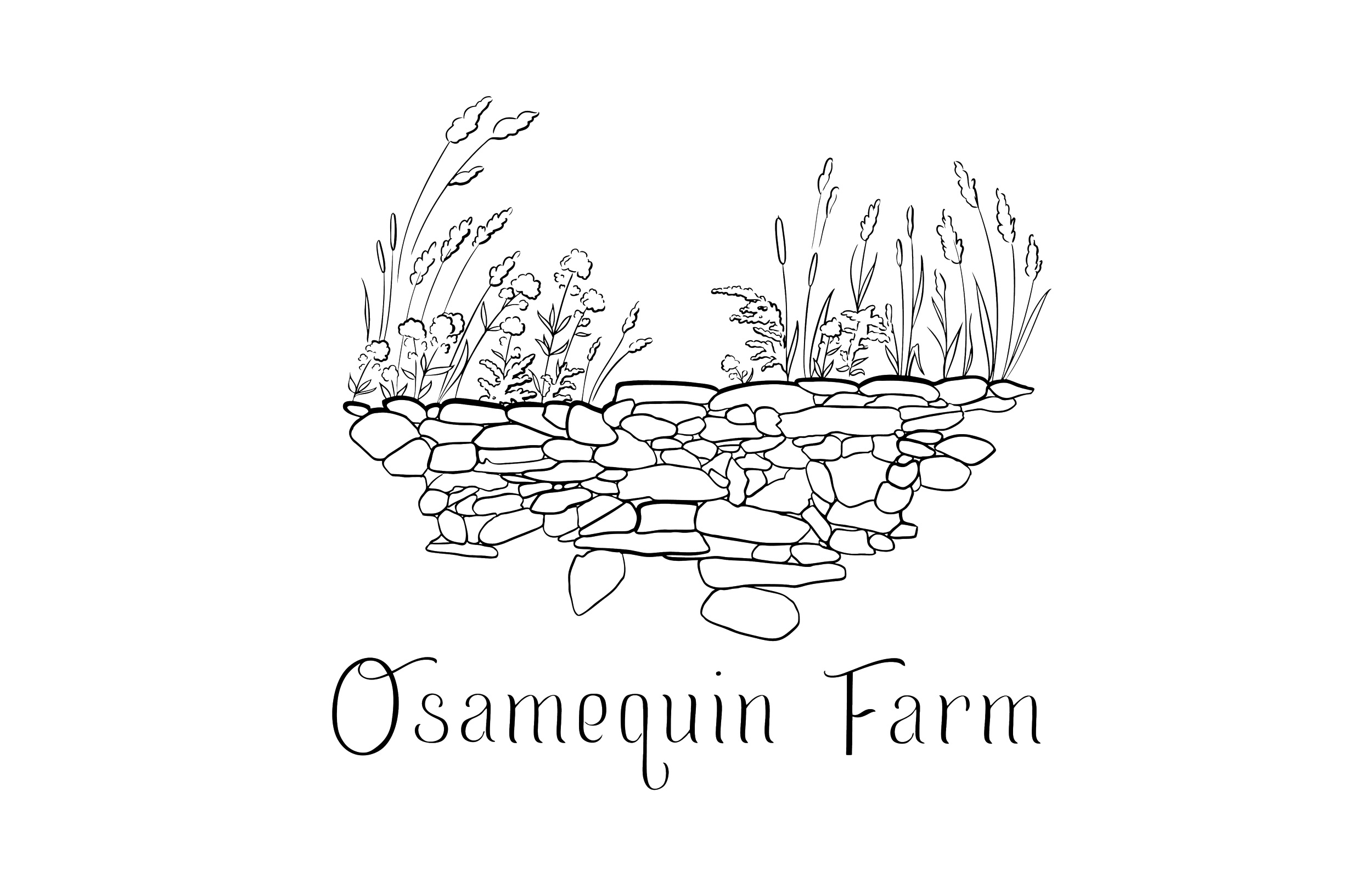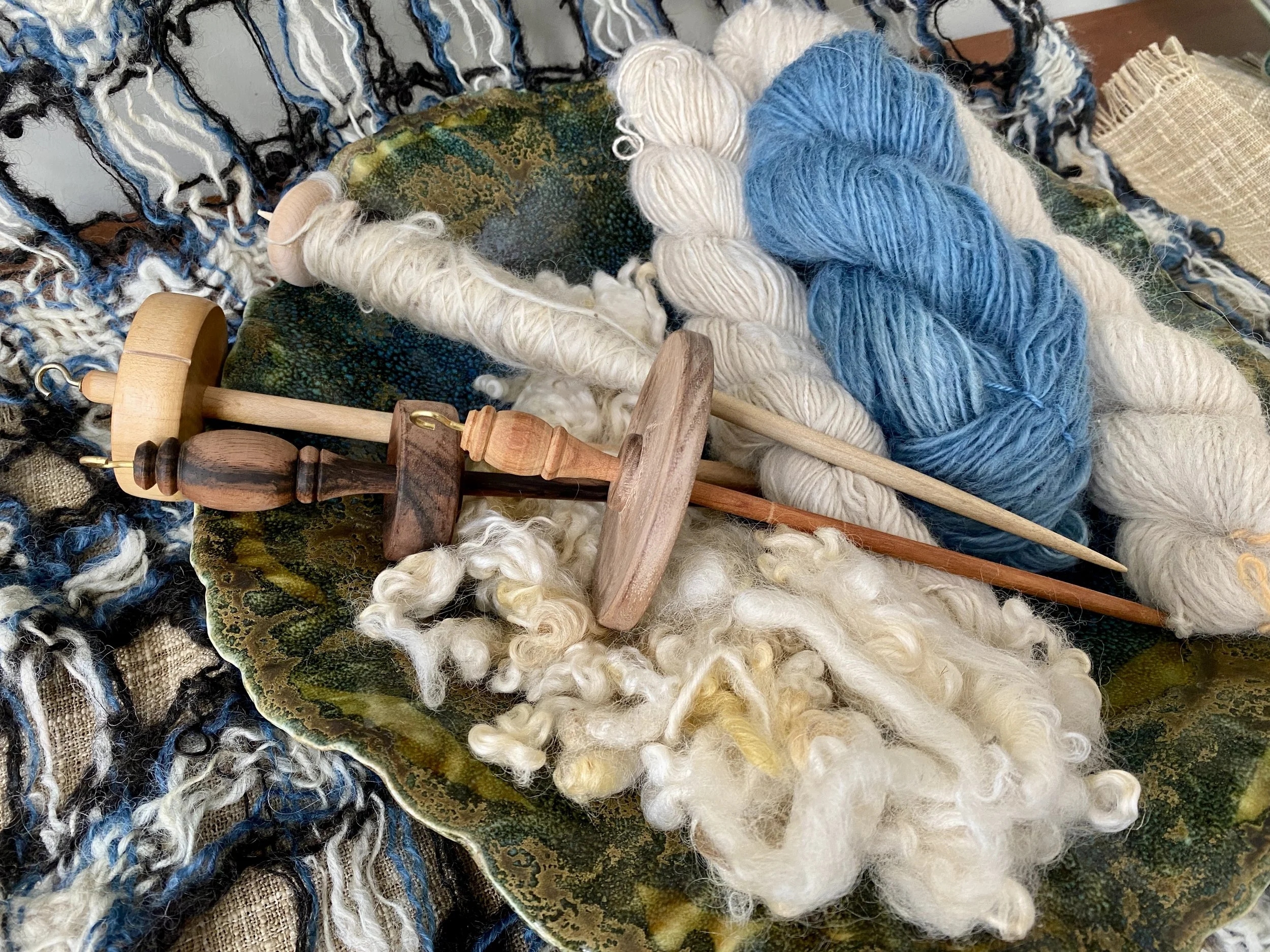Ever wondered what it takes to turn the fiber grown on a farm into the textile on your back?
This workshop will walk you through each step of the way, from meeting the Osamequin sheep to spinning their wool.
We will cover the basics of how to prepare raw wool for spinning, how to use a drop spindle, and how to dye and finish the yarn we spin, and create little woven sample cards. This is a great class for anyone that wants a taste of the whole process of farm to fiber and is ready for a day packed with learning and fruitful discussions. Clara will give a presentation on the importance of farm-to-fiber movements and the can of worms that is the textile industry to help add meaning to the process participants are sampling. This workshop is just as much about the discussions we will have and connections we will build as it is about learning the physical processes. An emphasis on learning, rather than perfecting, is key.
What you’ll learn
Basics of fleece preparation for spinning (skirting, scouring, picking, and carding)
Spinning on a drop spindle
Natural dye process on wool (mordanting and dyeing)
Setting a skein of wool
Basic weaving on a small handheld loom
Why you should get excited about farm to fiber!
What you’ll create
Your own hand processed, spun, dyed and woven wool sample squares!
Shared passion for community-oriented movements and processes
What you’ll receive
A simple drop spindle and small handheld loom to take home
Instructions and recipes for everything covered in class (and it’s a lot!)
Presentation with information about farm-to-fiber and sustainability in textiles
List of further resources, inspiration, and material sources
You will need
A lunch and a water bottle
About the Instructor:
Clara Hayong Boberg (they/he) is a New England-based textile artist and grower that specializes in natural dyes and fibers. They fell in love with the circular process of growing and using dyes and fibers because of the amount of time and care it takes to build a good relationship with the soil, plants, and surrounding community. Their work explores ideas of reciprocity, home, identity, and relationship building. A large part of their work is the process of sharing knowledge with others to create a communal space of curiosity and joy; this takes the form of workshops, intimate conversations, and resource sharing. They believe the process of working with and caring for the land in tandem with learning the social, environmental, and cultural histories of the spaces and materials they work with is required to be a responsible maker.













